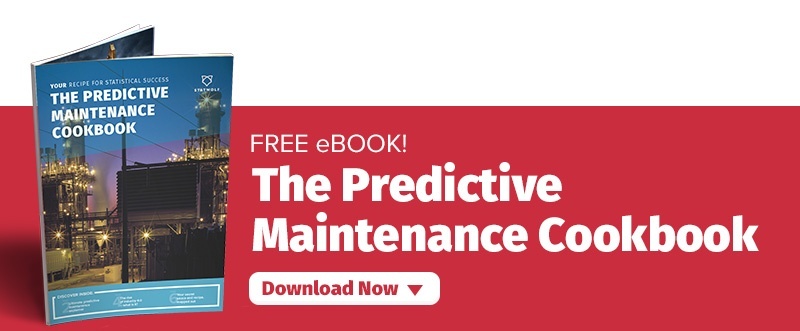9 key facts about machine learning in 2017
Moore’s Law has always been one of tech’s most famous decrees. While its original meaning has changed, it’s still a useful indicator for where things are going. Originally, Moore’s Law stated that the number of transistors you put on an integrated circuit doubles every year.
Now, we take it to mean that computing power doubles every two years. And with such constant change, the capabilities of machine learning and AI are constantly evolving.
While Moore’s Law deals in doubles, machine learning has seen even greater growth over the past 12 months, so we’ve assembled nine of the most impressive things that happened during 2017.
1. Amazon has reduced ‘click to ship’ time down to 15 minutes
In 2012, Amazon acquired Kiva, a robotics company. Using a machine learning algorithm, it automates picking and packing items in a warehouse logistics setting. With Kiva’s capabilities, Amazon’s average time from ‘click to ship’ now stands at 15 minutes. That’s a 225 percent decrease or in real time terms, it’s down from 60-75 minutes in previous years.
2. 20 percent of the C-Suite is using machine learning
According to a study by McKinsey, 20 percent of C-level executives (across 10 countries and 14 different industries) report that they are using machine learning (or AI) as a core part of their business. Expect that figure to grow in coming years. Why? Well, click here to read our blog about how machine learning will improve the machines you already own.
3. Investment in AI is disproportionate
The United States is responsible for 66 percent of the total worldwide investment in artificial intelligence. The country with the next highest investment is China, at 18 percent.
Which means that Europe and the rest of the world are accountable for only 16 percent of global investment in AI. As McKinsey says: “The future of AI will be innovative, but may not be shared equally.”
4. Netflix is investing heavily to keep users engaged
Netflix saved $1 billion this year as a result of its machine learning algorithm which recommends personalised TV shows and movies to subscribers.
Users are now far more satisfied with suggested shows and films, and that means they are less likely to abandon Netflix in favour of alternatives. The company’s research shows that customers give up searching for a movie or show after 90 seconds. So solving the ‘there’s nothing on Netflix’ problem is worth a colossal amount annually in non-cancelled subscriptions.
5. Google’s Deep Learning can benefit health
Google’s Deep Learning machine learning programme is accurate 89 percent of the time in detecting breast cancer. That’s 15 percent more effective than pathologists at 74 percent.
While the initial results are encouraging, Google has stressed that machine learning isn’t going to replace doctors any time soon, in part because its test results in more false-positives than diagnoses by doctors.
Google’s plan is for the Deep Learning programme to analyse slides and flag anomalies to pathologists who can then check the suspicious slides themselves – the perfect symbiosis of man and machine.
6. 12.5 percent staff time is lost in data collection
According to research, five hours and 36 minutes is the amount of time that the average marketing professional spends collating data and getting it ready for presentation.
That’s a staggering amount of time – almost an entire working day. Over the course of the year, it amounts to 12.5 percent of a person’s average working week, or 11 days.
You could walk from London to Paris in the same time, and on staffing terms, that’s €1 out of every €8 of a given staff member’s wage. An advanced marketing dashboard can give your team that time back and cut hours and spend from the collating and reporting process.
7. 48 percent is the predicted growth of the automotive industry
According to Practica, machine learning in the automotive industry is predicted to grow by 48 percent between now and 2025.
The market stood at $404 million last year and is predicted to reach $14 billion in 2025. This is in part because of the continued race between Google, Apple, Elon Musk and Uber to achieve the world’s first fully autonomous car.
8. €150 billion saved on healthcare by 2025
7.1 million Americans are now enrolled in a digital health platform, monitoring systems where vital signs are continually monitored by sensors worn on the body. This information is then sent to a machine learning analytics centre which flags anomalies and alerts treatment professionals. The savings could be gargantuan.
In the US alone, the direct and indirect costs of heart disease is $316 billion every year.
Forbes estimates that one of the main contributing factors to the cost has been, “the inability to monitor heart rhythms of patients with cardiovascular disease until they arrive at an emergency room by ambulance.” With monitoring, the estimated savings in financial terms is €150 billion by 2025.
9. Chatbots will power 85 percent of customer service by 2020
The percentage of people in the US who interact with machine learning-powered chatbots on a weekly basis is now at 17 percent.
By 2020, Gartner predicts that chatbots will power 85 percent of all customer service interactions and that the average person will have more conversations with bots than with their partner!
Want to find out how Big Data could help your business?
If you want to harness the power of artificial intelligence in your business, Statwolf’s data science service can help, with advanced online data visualisation and analysis simply running in your web browser.
We offer a range of custom services to suit your needs: advanced data analysis and modelling, custom algorithm creation and implementation with a particular focus on Predictive Maintenance.
We’ve helped a host of clients get the most out of their data. Are you going to be next? We don’t just deal in data analytics; we offer data solutions.
Want to make sense of your data? Download our comprehensive guide: The Pedictive Maintenance Cookbook.



